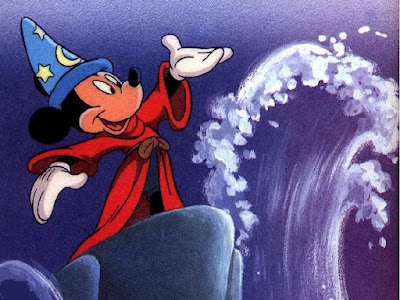What is it?
I'm starting to see where Coleridge got his material...
As defined by the Atmospheric Optics Glossary, a fata morgana is "A complex mirage display that involves multiple images, alternately expanded and compressed vertically, often giving the impression of buildings, cliffs, etc. where no such objects exist." Typically, fata morganas are scene specifically from the Straight of Messina in Italy. Fata Morganas are superior mirages, meaning that when light hits cold air, it is refracted downwards. So a superior mirage will reflect the thing it is hitting above where it actually is.
if that helps...
Thus, the fata morgana, an unusually complex type of superior mirage, involving , happen when the temperature of water, ice, etc. is colder than the temperature of the ice above it. So how is a fata morgana different from your typical superior mirage? It requires stacks of superior mirages, resulting in seriously convoluted images.
Be very afraid.
Although the image above is nothing like a fata morgana, the legend of the Flying Dutchman did originate with this type of mirage since it can refract the images of ships higher on the horizon than they are.
What does it mean?
"Fata Morgana" is Italian for "Fairy Morgana," and the "Morgana" refers to none other than Morgan le Fay. For those of you unacquainted with the nuances of Arthurian legend, I would refer you first to The Once and Future King.
This is my copy.
However, if you haven't time to digest the brilliant anachronisms of T. H. White, you should know that Morgan le Fay is none other than the half-sister sorceress of King Arthur. You should probably also know that in some legends, Arthur is tricked into committing incest with her, which leads to the birth of his son Mordred, who ultimately threatens Camelot's very existence, but that's only in some legends. Anyway, because William the Conquerer, aka the Duke of Normandy, defeated the English in the Battle of Hastings, Arthurian legend is recorded in both the French and English record (although I'm told all the interesting tales are French). The "le fay" of her name is really just the English bastardization of the French "la fée," or fairy.
sooo much deviant art
Sailors confronted with the odd mirages described above attributed them Morgan, hailing them fairy castles in the sky. A further inspiration reason for the etymology rests with the influence of Morgan's character from Welsh legends. She is comparable to their goddess, Modron, but in Welsh, Morgan literally mean "sea-dweller." This is another viable reason that the mirages would bring her to mind.
the Welsh coast
That's pretty much the extent of the etymology except for a bit of speculation. In Arabic, "marjan" was the name of a popular sorceress. I don't know the extent of Arabic's influence on the Norman's, but regardless, "marjan" translates to "pearl." Although this last tidbit has very little to do with mirages, it is interesting to note sorcery's repeated connection to water.
For more information see:
More on Morgan
Etymology
A scientific explanation
Always faithful but questionably reliable







No comments:
Post a Comment